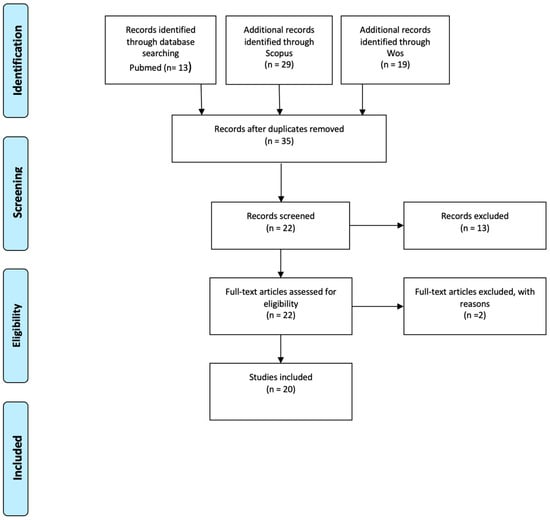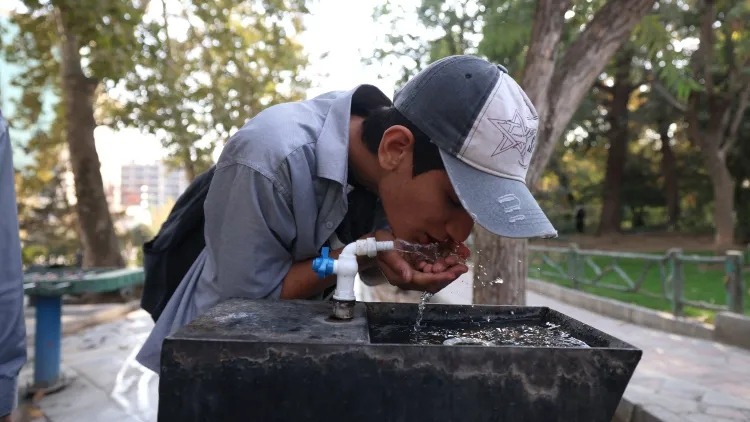- –
Brain Tissue.
- –
Cortical hemorrhages
- –
Sandard histological stains
- –
Immunohistochemistry (GFAP)
- –
Analysis of frozen sections.
- –
Study results show that histomorphological changes in brain tissue samples follow a predictable time course after TBI.
- –
Eighteen major histological criteria were identified, including blood cell reactions, neuronal damage and axonal swelling, astrocytic reaction and mesenchymal proliferation.
- –
The statistical analysis highlighted that the frequency and intensity of each alteration vary based on the post-traumatic survival interval, allowing the time elapsed since the trauma to be estimated.
- –
Brain tissue.
- –
Gunshot wounds to the head, formation of a temporary cavity around the bullet track, with extensive mechanical damage to axons and neurons.
- –
Histology (GFAP, b-APP, CD68).
- –
CT and MRI.
- –
GFAP was used to characterize astrocytic damage and establish the extent and timing of traumatic brain injuries. – The combined use of imaging and histological analyses enables the reconstruction of the bullet path, cause of death, and survival time.
- –
Cerebral white matter.
- –
CA4 region of the hippocampus.
- –
Acute injuries and with delayed death.
- –
Progressive brain dysfunction.
- –
Fatal post-trauma complications.
- –
Immunocytochemistry (GFAP and protein S100)
- –
Quantitative analysis of GFAP and S100.
- –
The results suggest that the presence and quantity of astrocytes immunopositive for GFAP and S100 can provide important indications on the severity of brain damage, death dynamics and pathological responses following TBI -Immunopositivity for GFAP and S100 has proven useful in elucidating the cause and process of deaths due to brain injury.
- –
Parietal lobe.
- –
Hippocampus.
- –
Cerebral laceration.
- –
Subarachnoid Hemorrhage (SAH).
- –
Intracranial hematoma.
- –
Immunocytochemical study on bFGF, GFAP, ssDNA.
- –
These findings provide an in-depth understanding of how different proteins react following traumatic brain injury, offering potential biomarkers to evaluate brain damage and to guide therapeutic strategies in the early stages after trauma.
- –
Site of the brain lesion.
- –
Area contralateral to the lesion.
- –
Hippocampus.
- –
Cerebellum portion.
- –
Nine out of twelve road accidents.
- –
Three out of twelve fall-related injuries.
- –
Skull fractures, cerebral contusions, intracranial hemorrhages.
- –
RNA extraction using Trifast reagent.
- –
Reverse Transcription
- –
qPCR.
- –
Primer design.
- –
pH measurement of injured tissues.
- –
Data analysis using LinRegPCR program.
- –
The results indicate that the cerebellum reacts quickly to brain trauma and suggest that it may be a key region for further studies on the impact of brain injuries and potential therapies.
- –
Activation of GFAP generally occurred 2–4 days post-trauma, suggesting a delayed astroglial response to damage.
- –
Other genes such as TrkB and Caspase-3 are overexpressed immediately following these injuries.
- –
Samples of injured cerebral cortex.
- –
Traumatic subarachnoid hemorrhages.
- –
Chronic and acute subdural hematomas.
- –
Acute epidural hematomas.
- –
Light microscopy.
- –
Immunohistochemical staining IHC to detect GFAP.
- –
Immunofluorescent staining for p62-K48, p62-K63, and GFAP-K48.
- –
Laser scanning confocal microscope.
- –
The study results highlighted several key aspects regarding clasmatodendrosis, a morphological change in astrocytes following head trauma.
- –
Cases with clasmatodendrosis showed a significantly shorter median survival time (12 h), and these cases also exhibited a higher frequency of edema and activation of protein degradation pathways.
- –
Astrocyte alterations could affect microvascular functions in the brain, such as the regulation of the blood–brain barrier and the control of cerebral blood flow, especially in the acute phase of head trauma.
- –
the pericontusional area;
- –
contralateral cortex;
- –
hippocampus -cerebellum.
- –
Blood vessel rupture -Blood–brain barrier (BBB) damage -Loss of basal membrane integrity -Neuronal death and axonal damage -Reactive astrogliosis.
- –
Western Blot(NSE and GFAP)
- –
Significant increase in GFAP after 4 days, suggesting a delayed astrocytic response.
- –
NSE and GFAP are useful biomarkers for determining “wound age” (time elapsed since trauma) in autopsies.
- –
Skull and/or spinal fractures.
- –
Subarachnoid and subdural hemorrhages.
- –
Brain and spinal cord contusions.
- –
Diffuse axonal injury (DAI).
- –
Cerebral and spinal edema.
- –
Tissue lacerations and necrosis.
- –
Immunohistochemistry (GFAP, nestin).
- –
Morphometric analysis.
- –
Increase in GFAP- and nestin-positive ependymal cells after CNS trauma.
- –
Indicates that astrocyte activation is a distinct response from the increase in progenitor cells.
- –
Blood (serum).
- –
Cerebrospinal fluid from suboccipital puncture.
- –
Frontal cortex tissue.
- –
Twenty-one out of thirty-eight fatal head injuries.
- –
Seventeen out of thirty-eight deaths from cardiopulmonary failure (control group).
- –
ELISA.
- –
Histological examination with hematoxylin and eosin.
- –
Immunohistochemistry (anti-Tau, GFAP, CD34, CD68).
- –
Microscopy
- –
In the group with head trauma, marked clasmatodendrosis of astrocytes was observed, which implies damage to these cells, and damage to astrocyte endfeet, which are crucial for maintaining the blood–brain barrier. These damages were detected through immunostaining with GFAP, indicating a direct impact of trauma on the structure and function of astrocytes and on the components of the blood–brain barrier.
- –
biofluids (CSF, blood)
- –
brain tissue
- –
Closed traumatic injuries (contusions, intracranial hematomas, and cerebral swelling)
- –
open injuries
- –
intracranial hemorrhage
- –
hydrocephalus,
- –
diffuse axonal injuries
- –
Western Blot (GFAP, NSE, S100B, UCH-L1)
- –
S100B and NSE indicated as useful markers for traumatic and ischemic brain injuries
- –
GFAP is relevant in acute and subacute phases to predict neurological prognosis.
- –
cerebrospinal fluid (CSF) from suboccipital puncture
- –
frontal cortex tissue
- –
21 out of 38 fatal head injuries
- –
17 out of 38 deaths from cardiopulmonary failure (control group)
- –
ELISA to measure GFAP, NFL, and MBP in CSF
- –
immunohistochemistry for brain tissues
- –
elevated levels of specific proteins in cerebrospinal fluid (CSF) are correlated with traumatic brain injuries
- –
protein analysis in CSF can be a useful diagnostic tool to determine the extent of traumatic brain injuries in post-mortem studies, complementing other diagnostic techniques such as neurological examination and imaging studies.
- –
blood serum collected from the right heart (valid samples: 125 out of 129)
- –
12 TBIs (4 road accidents, 3 falls, 2 blunt traumas, 1 firearm injury, 1 railway accident)
- –
3 subarachnoid hemorrhages due to aneurysm
- –
2 intracerebral hemorrhages
- –
1 subdural hematoma
- –
111 non-cerebral primary causes of death
- –
ELISA
- –
although GFAP is a useful biomarker for assessing the extent of brain damage in acute conditions such as stroke, its levels in post-mortem samples do not specifically discriminate between cerebral and non-cerebral causes of death. However, its association with the duration of agony provides an interesting perspective for further research on the dynamics of brain damage in the perimortem phase.
- –
CSF
- –
serum
- –
42 out of 84 fatal TBIs
- –
42 out of 84 non-TBI controls
- –
quantitative multiplex chemiluminescent immunoassays for GFAP, BDNF, NGAL
- –
hemolysis index for post-mortem studies
- –
in CSF, GFAP proved to be an effective marker for identifying TBI cases. Additionally, in serum, only GFAP was significantly elevated in TBI cases compared to controls.
- –
threshold values for GFAP, BDNF, and NGAL were determined, which could help distinguish deaths caused by TBI from other types of death.
[15]
- –
Cortical lesions.
- –
Necrosis.
- –
Subdural/subarachnoid hemorrhages.
- –
Astrogliosis.
- –
Histology and immunohistochemistry (GFAP).
- –
quantitative analysis of GFAP.
- –
positive cell density in lesioned and perilesional areas.
- –
GFAP density increases with time post-trauma.-Glial scar visible after 1–2 months.-GFAP is useful for estimating the time elapsed since trauma.
[28]
- –
Samples from the frontal lobe (including cingulate cortex and corpus callosum)
- –
One cerebellar hemisphere.
- –
Severe cranial trauma with focal brain injuries such as contusions, subdural and intraventricular hemorrhages.
- –
Focal hypoperfusion in affected areas.
- –
Concomitant dysfunction in the formation of neurovascular units of the blood–brain barrier (BBB).
- –
Immunohistochemistry.
- –
Mallory staining.
- –
The accumulation of plasma proteins in neurons and Bergmann glia confirms BBB dysfunction in the early stages of cranial trauma.
- –
FFPE brain tissue
- –
Frozen brain tissue
- –
A total of 107 TBI with loss of consciousness (TBI w/LOC).
- –
A total of 425 not affected by TBI.
- –
Immunohistochemistry.
- –
Histelide immunoassay.
- –
Luminex assay.
- –
Mass spectrometry.
- –
RNA sequencing.
- –
Neuropathological evaluation.
- –
The neuropathological effects of traumatic brain injury were examined, showing no significant differences in pathological and inflammatory markers, a low incidence of chronic traumatic encephalopathy (CTE), and minimal changes in gene expression. However, an increase in Tau was observed in the hippocampus.
- –
GFAP was measured to assess the extent of tissue reaction to trauma and the level of brain inflammation, helping to understand how TBI affects long-term brain health and whether there is an association between TBI and increased astroglial activity, which could be an early indicator of future neurodegenerative diseases.
[19]
- –
Acute fatal traumatic brain injury (TBI).
- –
Subdural/subarachnoid hemorrhages.
- –
Neuronal necrosis.
- –
Blood–brain barrier (BBB) dysfunction.
- –
Quantitative immunoassays for CNS biomarkers: GFAP, NSE, S100B, BDNF.
- –
Acute-phase proteins: IL-6, NGAL, ferritin, LDH.
- –
Combination of GFAP + IL-6 is highly accurate for diagnosing fatal TBI.
- –
Severe cranial trauma from road accidents- gunshot wounds-sharp force injuries with brain contusions.
- –
Subdural and intraventricular hemorrhages.
- –
Focal necrosis in affected areas.
- –
Focal hypoperfusion and BBB damage.
- –
Immunohistochemistry (GFAP and CRYAB)
- –
Immunofluorescence
- –
Overexpression of GFAP associated with CRYAB in contused tissues is indicative of reactive astrogliosis and has potential as a marker for subacute injuries.
- –
Selective vulnerability of pyramidal neurons is observed during trauma.
[23]
- –
Cranial trauma with skull fractures.
- –
Subarachnoid hemorrhages.
- –
Brain contusions.
- –
Secondary ischemia and hypoxia.
- –
GFAP and UCH-L1 levels not significantly different between groups.
- –
Higher GFAP levels in CSF compared to serum across all groups.
- –
UCH-L1 significantly higher in CSF compared to serum in non-fatal trauma and controls.
- –
Serum from femoral venous sampling..
- –
Urine from suprapubic bladder sampling
- –
Forty out of sixty cases of fatal severe head injuries.
- –
Twenty out of sixty cases of sudden death without signs of head injuries.
- –
ELISA (double sandwich kit used for GFAP).
- –
statistical analysis of ELISA data using Statistica 13.1 PL software and Microsoft Office Excel 2010.
- –
The results showed a significant increase in GFAP concentration in serum and urine in study cases compared to control cases, demonstrating GFAP as a biomarker for the post-mortem diagnosis of traumatic brain injuries, given the correlation between elevated GFAP levels and astrocyte damage in the context of head trauma.
Source link
Matteo Antonio Sacco www.mdpi.com


